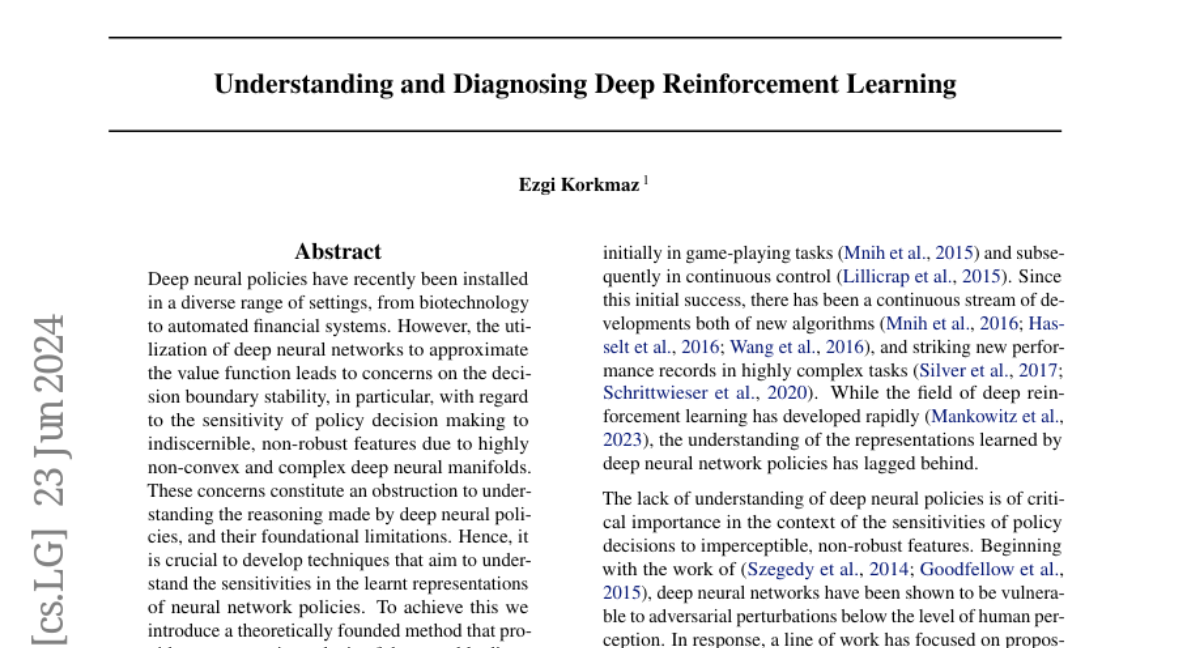Understanding and Diagnosing Deep Reinforcement Learning
Ezgi Korkmaz
2024-06-27

Summary
This paper discusses how deep reinforcement learning (RL) models make decisions and the challenges they face due to instability in their decision-making processes. It introduces a method to analyze these instabilities and improve the reliability of these AI systems.
What's the problem?
Deep reinforcement learning models are used in many important areas, like healthcare and finance, but they often struggle with making stable decisions. This instability can be caused by subtle, hard-to-detect features in the data that confuse the model. When these models encounter new situations, their decision boundaries (the lines that separate different choices) can change unpredictably, making their behavior difficult to understand and trust.
What's the solution?
To tackle this problem, the authors developed a systematic method to analyze how unstable these decision boundaries are over time and across different scenarios. They conducted experiments using a gaming environment called the Arcade Learning Environment (ALE) to test their method. Their findings showed that certain training techniques lead to more stable decision-making compared to others, which can help identify and address the factors that cause instability in deep RL models.
Why it matters?
This research is important because it helps us understand how deep reinforcement learning models make decisions and why they sometimes fail. By improving our understanding of their decision boundaries, we can develop more reliable AI systems that perform better in real-world applications. This could lead to safer and more effective use of AI in critical areas like healthcare, finance, and robotics.
Abstract
Deep neural policies have recently been installed in a diverse range of settings, from biotechnology to automated financial systems. However, the utilization of deep neural networks to approximate the value function leads to concerns on the decision boundary stability, in particular, with regard to the sensitivity of policy decision making to indiscernible, non-robust features due to highly non-convex and complex deep neural manifolds. These concerns constitute an obstruction to understanding the reasoning made by deep neural policies, and their foundational limitations. Hence, it is crucial to develop techniques that aim to understand the sensitivities in the learnt representations of neural network policies. To achieve this we introduce a theoretically founded method that provides a systematic analysis of the unstable directions in the deep neural policy decision boundary across both time and space. Through experiments in the Arcade Learning Environment (ALE), we demonstrate the effectiveness of our technique for identifying correlated directions of instability, and for measuring how sample shifts remold the set of sensitive directions in the neural policy landscape. Most importantly, we demonstrate that state-of-the-art robust training techniques yield learning of disjoint unstable directions, with dramatically larger oscillations over time, when compared to standard training. We believe our results reveal the fundamental properties of the decision process made by reinforcement learning policies, and can help in constructing reliable and robust deep neural policies.